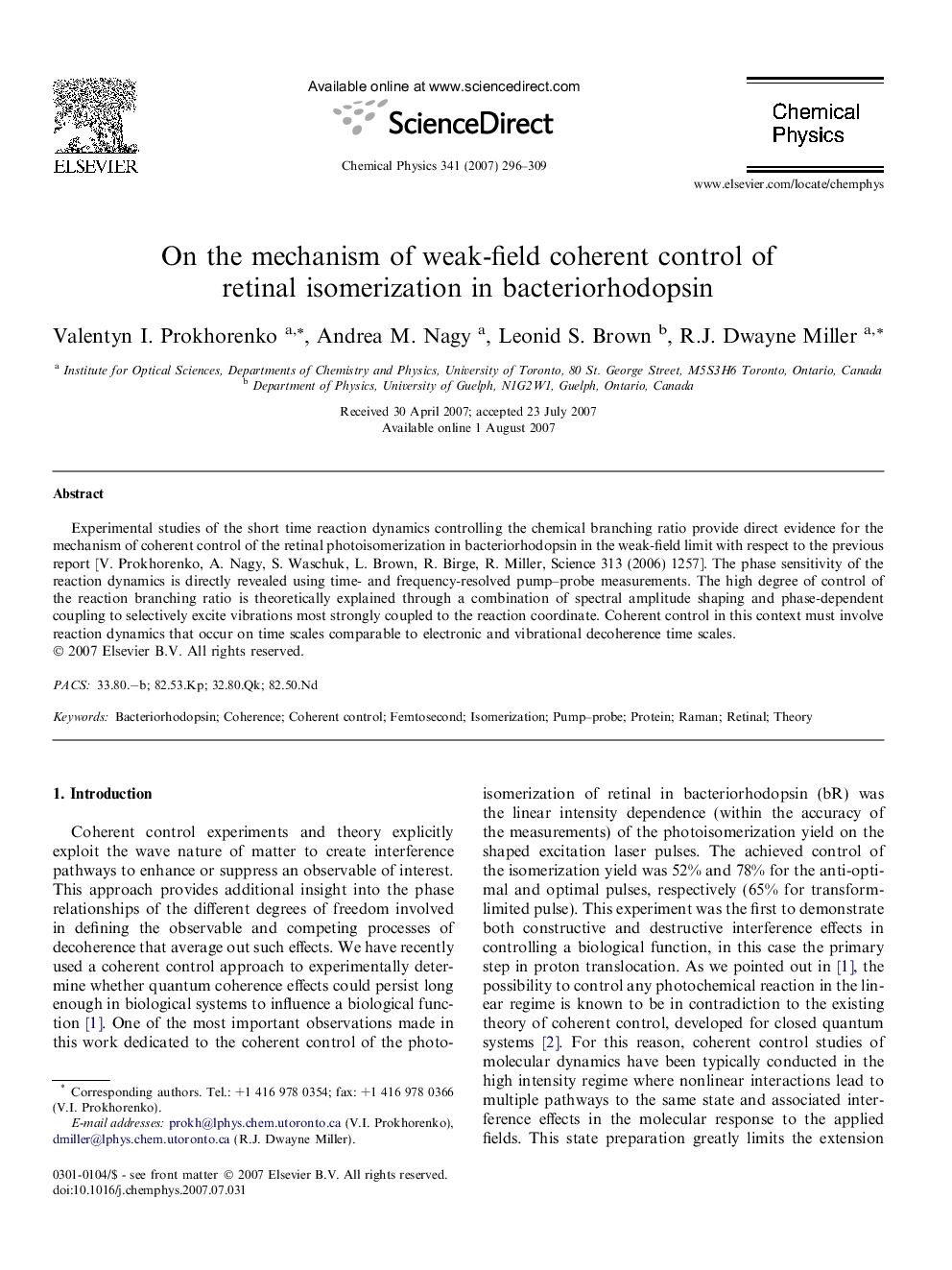| Article ID | Journal | Published Year | Pages | File Type |
|---|---|---|---|---|
| 5376110 | Chemical Physics | 2007 | 14 Pages |
Abstract
Experimental studies of the short time reaction dynamics controlling the chemical branching ratio provide direct evidence for the mechanism of coherent control of the retinal photoisomerization in bacteriorhodopsin in the weak-field limit with respect to the previous report [V. Prokhorenko, A. Nagy, S. Waschuk, L. Brown, R. Birge, R. Miller, Science 313 (2006) 1257]. The phase sensitivity of the reaction dynamics is directly revealed using time- and frequency-resolved pump-probe measurements. The high degree of control of the reaction branching ratio is theoretically explained through a combination of spectral amplitude shaping and phase-dependent coupling to selectively excite vibrations most strongly coupled to the reaction coordinate. Coherent control in this context must involve reaction dynamics that occur on time scales comparable to electronic and vibrational decoherence time scales.
Keywords
Related Topics
Physical Sciences and Engineering
Chemistry
Physical and Theoretical Chemistry
Authors
Valentyn I. Prokhorenko, Andrea M. Nagy, Leonid S. Brown, R.J. Dwayne Miller,
